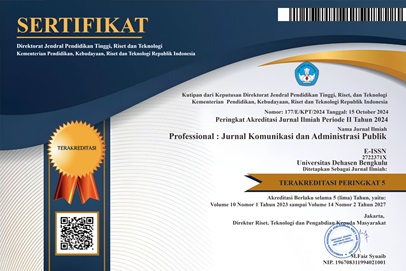Pemberdayaan Masyarakat Melalui Program Kelompok Usaha Bersama (KUBE) Untuk Menanggulangi Kemiskinan Di Kelurahan Bandar Utama Kota Tebing Tinggi
Abstract
The problem of social welfare, especially poverty which continues to increase from day to day, the Indonesian government through the Ministry of Social Affairs of the Republic of Indonesia issued a form of mitigation effort through community empowerment in the development of Productive Economic Enterprises (UEP). This study aims to identify and analyze community empowerment through the joint business group (KUBE) program to reduce poverty in Bandar Utama Village by the Tebing Tinggi City Social Service. This study uses a descriptive research method with a qualitative approach. The research method used is descriptive research with a qualitative approach. Data collection techniques were carried out by means of observation, interviews and documentation. The data obtained was then analyzed using triangulation as a data validation technique. This research is based on empowerment indicators according to Edi Suharto who argues that community empowerment can be achieved through enabling, empowering, protecting, and supporting. Based on the research results, it can be seen that community empowerment through the Joint Business Group (KUBE) program to tackle poverty in the Bandar Utama Village, Tebing Tinggi City, can be said to be still not running optimally.
Downloads
Copyright (c) 2022 Rizka Ramadani, Erika Revida MS.

This work is licensed under a Creative Commons Attribution-ShareAlike 4.0 International License.





